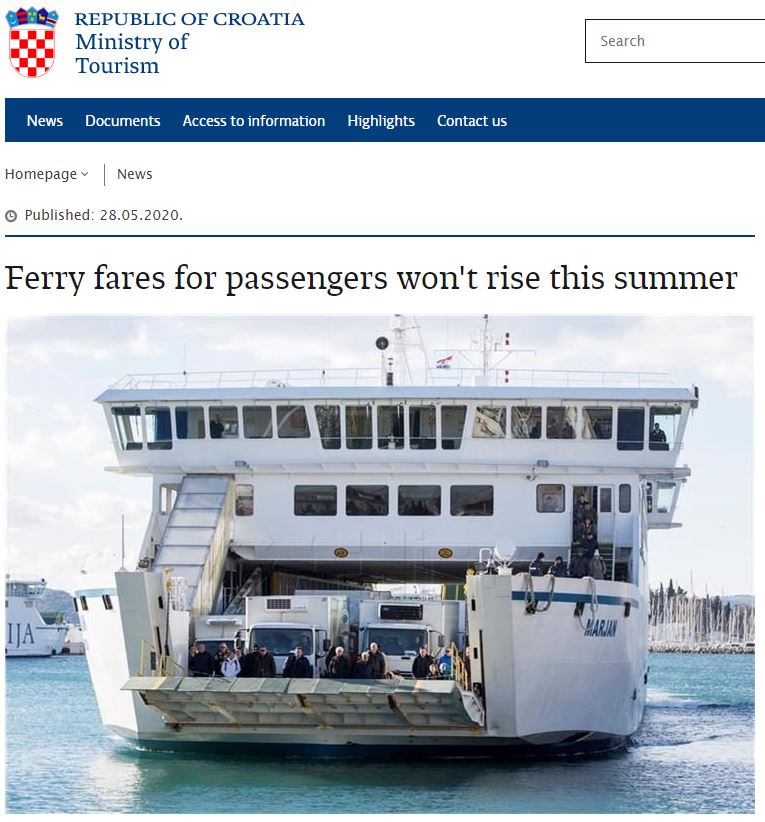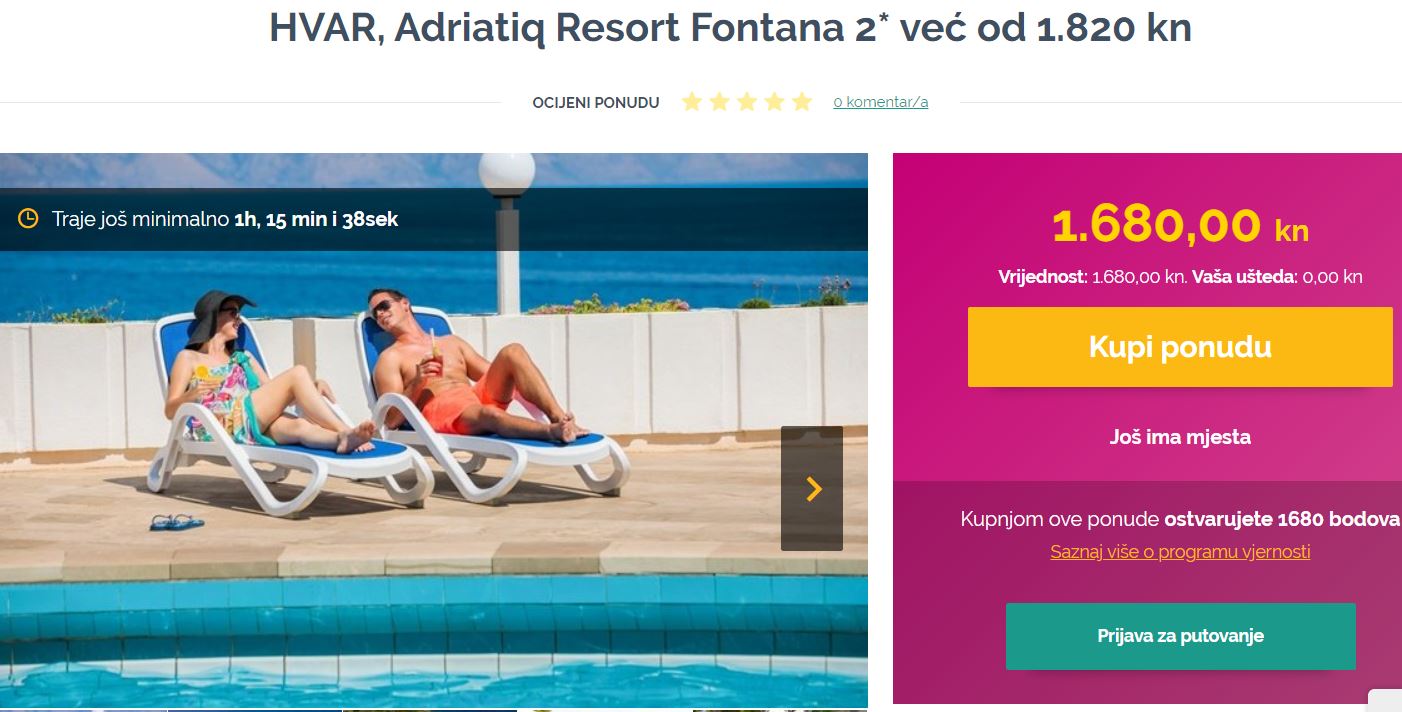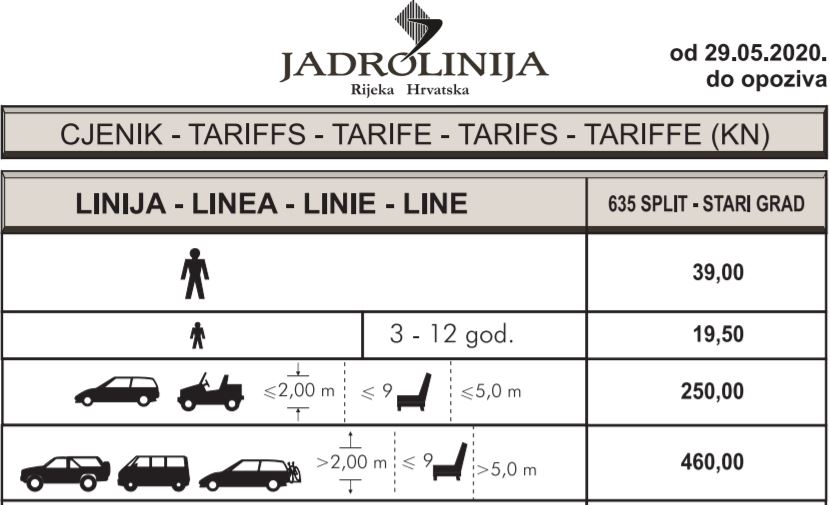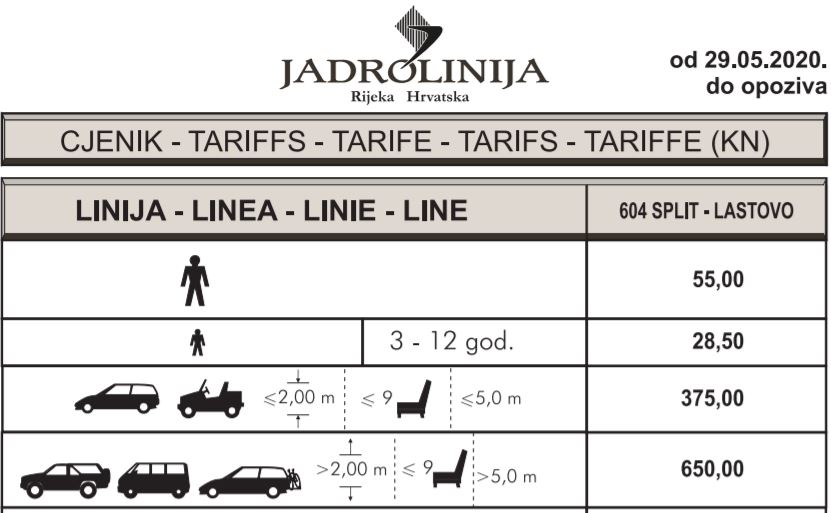Coronavirus Pandemic Encourages Croatian Cities to Cut Surtax
As Jadranka Dozan/Poslovni Dnevnik writes on the 9th of June, 2020, as a source of revenue for local budgets, surtaxes are more important for larger cities, so they're harder to give up for some. However, the coronavirus pandemic has caused several to think again...
Valpovo and Motovun will both abolish the surtax on income tax at the end of this month. The aforementioned locations thus join a small number of local units in Croatia whose residents don't have the burden of surtax on their backs, as well as everything else they need to think about in these coronavirus-dominated times.
Pozega and Belisce both reduced their surtax on income tax from 10 to 7 percent back in early June, and a month earlier (in early May) the municipality of Donji Miholjac started applying a 5 percent surtax instead of the previous 8 percent surtax. At the same time, in Bjelovar, an extremely forward-thinking continental Croatian city that has made the biggest strides in the area of local levies in the past few years, a zero surtax rate has been in place since May.
Bjelovar's city authorities, led by Mayor Dario Hrebak, reduced the surtax from 12 percent down to 9 percent last May, and after cutting it even further, down to 6 percent earlier this year, they have abolished it completely since last month. Starting on May the 1st, 2020, the municipality of Dugopolje also decided to abolish surtax, surtax there stood at 8 percent until that point in time.
A month ago, the local government in Rugvica decided to make a similar move, where the surtax rate within income taxation was 6 percent until relatively recently. Sinj then completely exempted its citizens from surtax at the rate of 8 percent.
According to the Tax Administration, the same was done by the Belica (Medjimurje), which, until this year, charged a symbolic 1 percent surtax. Promina in the Drnis region (inland Dalmatia), has had its 5 percent surtax abolished since back in February.
These are just a few of the areas of Croatia in which local governments have decided to take the pluge and redice the fiscal burdens on their citizens in the coronavirus era, there are others which could be added to this list and it's likely that more will follow.
This is, at least to some extent, a question of the structure of the economy and of employees, ie, the average level of wages and the share of those who are outside of the tax man's scissors. For the authorities in smaller cities, the policy of the abolition of surtax can also be an instrument for attracting the population and entrepreneurial activity.
Thus, Dario Hrebak of Bjelovar recently said that there should be no fear that reducing taxes will cause a loss in revenue. Back in March, the first month of the coronavirus crisis, they earned half a million kuna more than in the same month last year. Increasing consumption and getting rid of surtax creates, he says, yet another new activity.
For more, follow our business page.
Croatian Tourism Strategy in Action: Ferry Prices Strangling Island Tourism
June 10, 2020 - Croatia's islands have some fantastic bargains right now, but few are taking advantage of them. One major factor are the ferry prices.
The island of Hvar has never been more idyllic.
Or as affordable.
I have not been to Hvar Town yet (but will be filming there tomorrow), but stories of cocktails at 25 kuna and just 37 registered guests are incredible.
And apparently true.
If you have never visited Hvar but always dreamed of doing so, you will have no more enjoyable or affordable opportunity than this summer.
As I wrote back on March 25, 2020 in Hope v Reality: Will There Be a 2020 Tourist Season in Croatia?,
'Competition for tourists after coronavirus is going to be INSANE.'
Greece, Italy, Spain, Egypt, France, Turkey, Tunisia, Montenegro and many other countries have very large tourism industries, all of which are in a similar situation as Croatia. They will all be trying extra hard to grab whatever they can from the smaller pot of potential tourists. And one of the key weapons they will fight with is one where Croatian tourism is not particularly competitive.
Price.
So how are our tourism gurus dealing with the price war? From the official Ministry of Tourism website on May 28, 2020:
That's right. State-owned ferry company Jadrolinija decided to play its part in the fight for Croatia's breathing tourism by not raising prices this year. They did not reduce them either, just kept them the same.
This was spun on the official ministry website as good news, somehow.
So how does it look on the ground?
Those hotels which are open are almost empty right now, and there are some quite sensational offers. 8 days on the water in Jelsa, half-board at Hotel Fontana, just 1,680 kuna per adult (about 220 euro each), with one child free, the second child half price. Here is the link if you want to book.
With such great deals, locals who have a little cash might be able to afford the sunshine island for the first time in years. It will be an incredible summer on Hvar, and I genuinely cannot remember it being so beautiful or tranquil - similar I expect to the first years after the Homeland War.
Great to see the State ferry company recognising that and making it as easy as possible. That family of four could have the holiday of a lifetime on Hvar, bringing their bikes, for just 4,200 kuna for all four, half board, plus ferry crossings.
Ah yes, the ferry crossing from Split to Stari Grad. A return ticket to costs 2 x 460 kuna for your family car with bikes, 4 x 39 kuna for the adults return, and 4 x 19.50 for the kids. The total price comes to 1,152 kuna, more than 25% of the entire holiday cost.
With disposable cash very limited for many families, that 25% could be better spent on a similar hotel deal on the mainland coast. The hotels there are also very empty, and there is plenty of space at the beach.
And spare a thought for the tourism industry on the island of Lastovo.
The fact that the Ministry of Tourism reports no increases in ferry prices as news worthy of publishing on its website tells its own story.
Just an idea, but with Hvar and other islands this affordable, how about reducing the ferry prices 50%? You may find that twice as many people come, which would mean no lost revenue for the State company. And it might give some island businesses a chance to survive.
Are you interested in working towards a better Croatia for your children? Meet CROMADS.
CROMADS: Why You Should Move to Croatia, With or Without Uhljebistan
If you would like to get involved in the CROMADS project, tell us a little about you and how you can help - This email address is being protected from spambots. You need JavaScript enabled to view it.
For the latest travel info, bookmark our main travel info article, which is updated daily.
Join the Total Croatia Travel INFO Viber community.
Read the Croatian Travel Update in your language - now available in 24 languages
Austria to Lift Quarantine Rules for Travellers from Croatia and Some Other EU States
ZAGREB, June 9, 2020 - Austria will reopen its borders to Italy and lift a quarantine requirement for travellers from over 20 other European countries, including Croatia next week, Reuters reported on Tuesday.
Austria will reopen its borders to Italy and lift a quarantine requirement for travellers from over 20 other European countries next week, officials were quoted by Reuters as saying on Tuesday.
This is the direction in a further easing of restrictions imposed to contain the coronavirus.
"The decision should in particular ease tensions with Italy after Austria singled out its southern neighbour for continued coronavirus-related checks given Italy's high number of COVID-19 infections and deaths," Reuters says.
Austria, which borders eight countries, had lifted coronavirus-induced border restrictions last week for all of them except Italy, which prompted Rome to say such "individualist" solutions risked damaging the image of the 27-nation European Union.
As of June 16 Austria will lift controls on travel from more than two dozen countries including popular holiday destinations Greece and Croatia, the officials said on condition of anonymity, meaning arrivals from those countries would neither have to go into a two-week quarantine nor show a negative test. The Foreign Ministry and Chancellor Sebastian Kurz's office declined to comment., according to Reuters
Earlier in the day Croatia's Prime Minister Andrej Plenkovic said that he had discussed the matter with Chancellor Kurz.
Plenkovic: Austrian govt to lift restrictions on arrivals from Croatia
The Austrian government will lift restrictions on arrivals from Croatia as of mid-June, Prime Minister Plenkovic announced after speaking with his Austrian counterpart.
"We agreed that tomorrow the Austrian government will adopt a decision on lifting restrictions on movement for people between Croatia and Austria as of mid-June," Plenkovic tweeted after speaking with Chancellor Kurz.
Anyone travelling from Croatia to Austria cannot enter Austria without restrictions whereas Croatia has opened its borders to 10 EU countries, including Austria.
Passengers from Croatia can now enter Austria upon presenting a negative test to coronavirus no older than four days which needs to be issued in either German or English. Croats, resident in Austria, can also enter that country but are required to spend 14 days in self-isolation.
For the latest travel info, bookmark our main travel info article, which is updated daily.
Read the Croatian Travel Update in your language - now available in 24 languages
Crossing the Neum Border with Croatia & BiH in the Corona Era: New Rules (July 24 Update)
July 24, 2020 - Crossing the Neum border between Croatia and Bosnia and Herzegovina in the corona era has a slightly different procedure.
July 24 update - TCN passed through the Neum Corridor twice this week. Waiting times at both borders were under 3 minutes on both occasions. Passports are scanned on the Croatian side and you have one hour to transit through. There were no border guards on the BiH side. There are no issues with any nationality transiting through.
PLEASE NOTE: THIS SITUATION CONTINUES TO BE THE CASE AFTER JULY 1 BORDER OPENING UPDATE. IF YOU ARE IN TRANSIT, YOU CAN PASS THROUGH.
One of the most-asked questions every summer is from tourists wanting to travel between Split and Dubrovnik, and what happens at the Neum Corridor, the 23-km coastal strip, sometimes called the Bosnian Riviera, which divides Dubrovnik and southern Dalmatia from the rest of Croatia? With Croatia now in the EU and on the brink of joining the Schengen zone, it means that a journey between Dalmatia's most popular tourism cities entails leaving the EU for about 20 minutes, before reentering Croatia at the Neum border.
The usual procedures are explained in this Total Croatia article on how to get from Split to Dubrovnik. If you don't want to leave Croatia, it is possible to stay within the country by taking the ferry service from Ploce on the mainland across to Trpanj on the Peljesac Peninsula. The Peljesac Bridge is also due for completion in 2022, at which point independent Croatia will be joined in one contiguous territory for the first time.
On my recent tour of the Croatian border control system, I asked about Neum and was surprised to learn that there was a change in the border crossing rules during the pandemic, a change which has been in force for a couple of months now, I think.
The Neum border is currently ONLY available for transit passengers. As such, you can travel on an ID, but your stay in BiH is timed. You have an hour to cross the 23 km. Your journey is timed, and if you take more than an hour, you will have problems as you try and reenter Croatia.
The Bosnian border police are also actively encouraging those who pass through the Neum border that this is transit only.
I always stop for lunch at Neum when I am driving down to Albania or Montenegro, but I guess this is discouraged for the moment.
If anyone has any experiences of recent travel across the Neum border, please let me know, and we will add to this resource. Send to This email address is being protected from spambots. You need JavaScript enabled to view it. Subject Neum.
For the latest travel info, bookmark our main travel info article, which is updated daily.
Join the Total Croatia Travel INFO Viber community.
Read the Croatian Travel Update in your language - now available in 24 languages
Behind the Scenes at the Croatian Border Control System: AMAZING!
June 9, 2020 - How is the Croatia border control working? TCN takes an exclusive tour of the working system, and our verdict is 10 out of 10 for the Croatian police and border control. As for the tourism chiefs...
Until last week I had only met one government minister in my 18 years here, as well as Prime Minister Andrej Plenkovic.
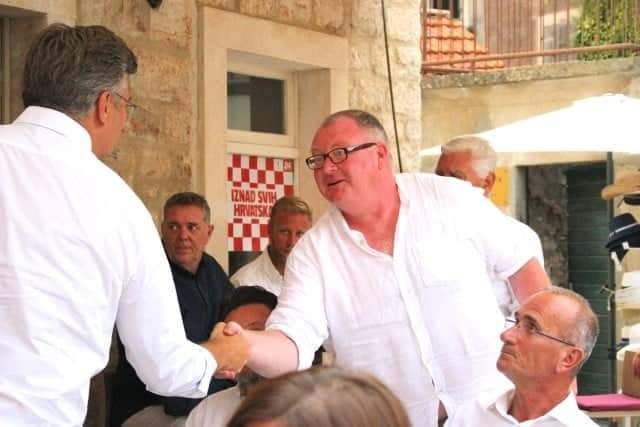
(Photo credit Vivian Grisogono)
I met the current PM a couple of years ago in Jelsa, when he called me over for a chat, a chat which ended with a promise that he would not be suing me.
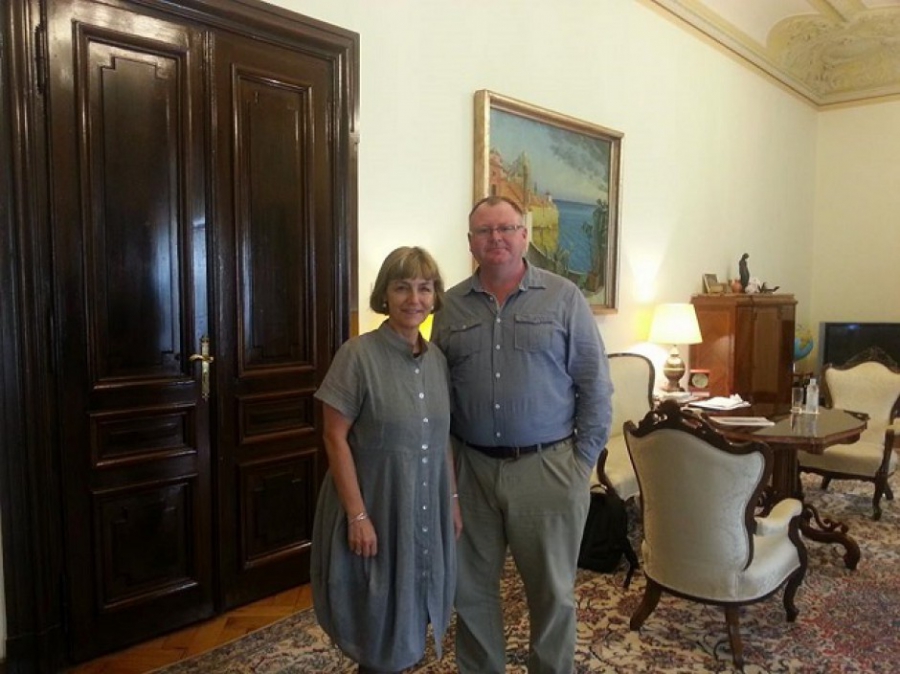
The only minister I met was the then Foreign Minister, Vesna Pusic, who kindly agreed to be my first ever interview on a new news portal called Total Croatia News, which launched on July 7, 2015. You can read the interview here.
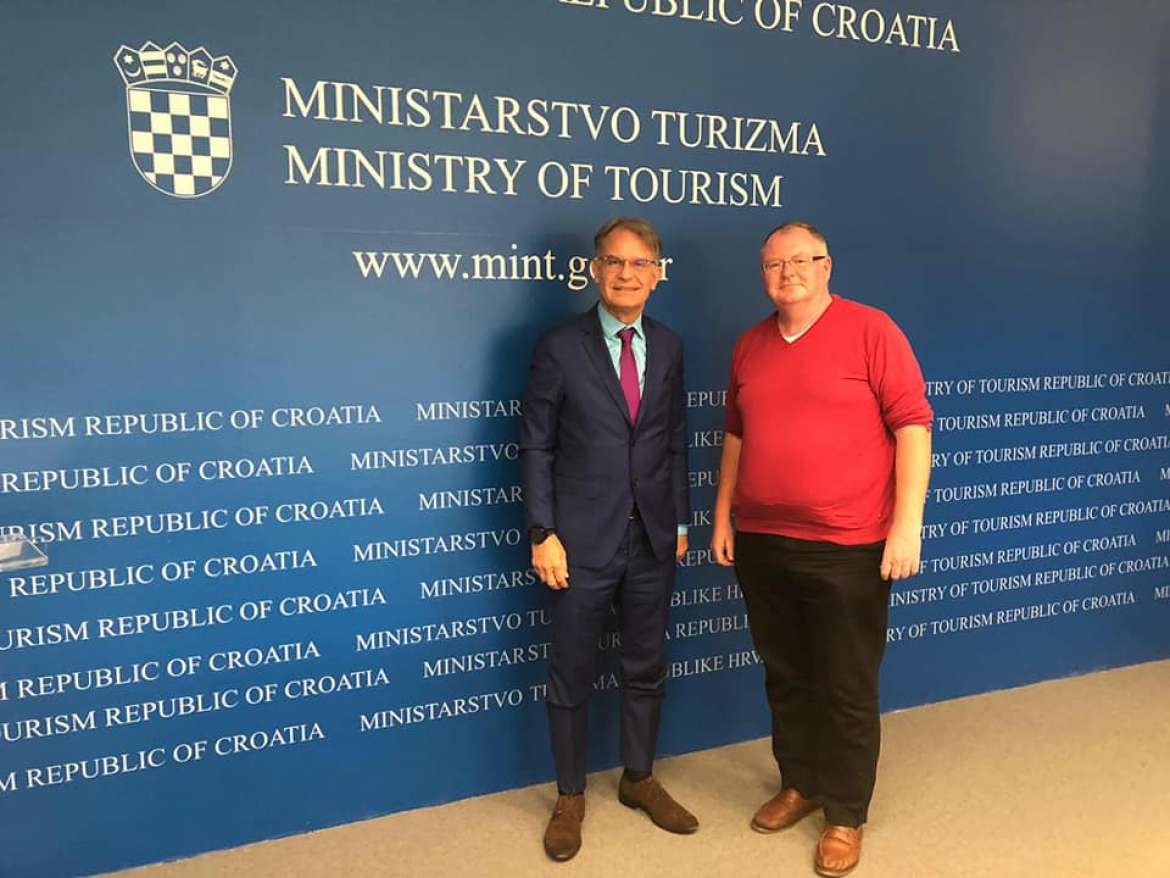
Last week, I met two ministers in the same week, and both very fascinating insights into the current situation in the corridors of power as Croatia presides over the Presidency of the EU during the COVID-19 pandemic.
First up, Minister of Tourism Gari Cappelli, who called me up for a chat and meeting in his office, during which he gave TCN some exclusive updates on the plans of the EU to open borders. You can read the interview here.
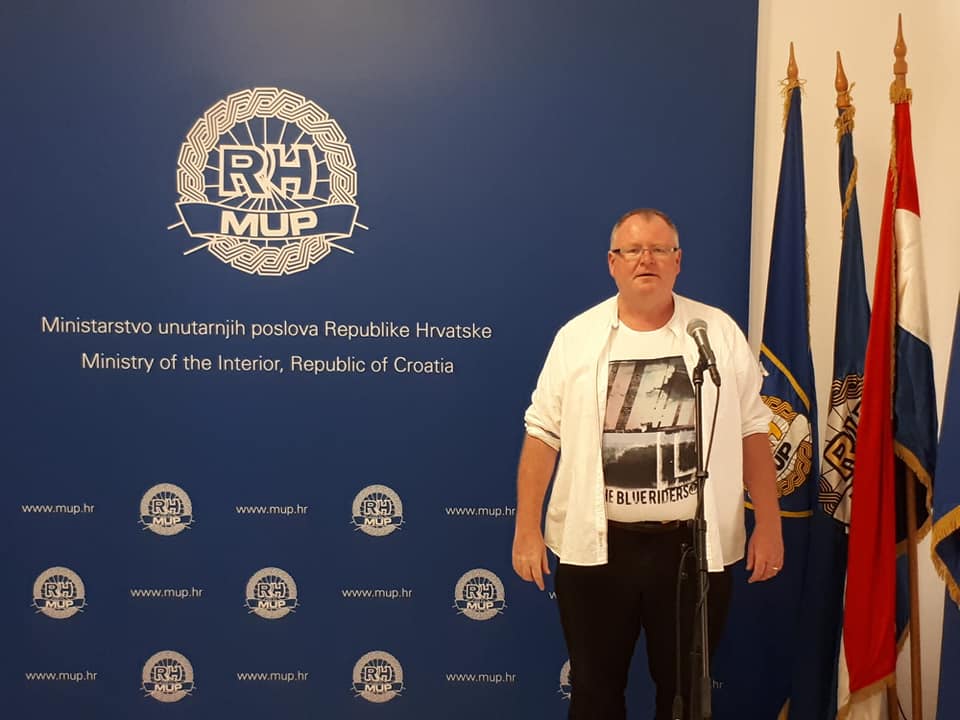
On May 17th, I visited the Croatian - Slovenian border with Kresimir Macan, former communications director for PM Plenkovic. As information about the actual situation at the border crossing was so unclear, I requested - and received - permission to visit the border with Macan to report on the situation first hand. It was quite an eye-opening experience: Who Can Cross the Croatia Slovenia Border? Who Cannot? A May 17, 2020 Border Visit
Since that visit to the border, an online registration form became available on the Interior Ministry website at the address entercroatia.mup.hr. The form, now in 11 languages, was intended to speed up the border procedure, as well as help the police track all visitors in the event of a corona outbreak.
At our May 17 border visit, the pace of the border control was painfully slow. The border police had to manually enter the details of the reservation and record contact details. Each car was taking 5-8 minutes to process, which would clearly be a disaster in the peak season. An emergency software fix was procured, and I was curious to see how it worked. I will refer to it more below, but this information is important for EVERY foreign visitor to Croatia at the moment, whether you are coming by land, sea or air.
1. If you fill the form in with your details (choose from 11 languages), you will receive an email from the police confirming receipt. Print this off, as well as your confirmed reservation, and show at any borders you encounter on the way, and you will be allowed to transit.
2. The procedure to proceed through the border if you have already registered is less than one minute, so 5-8 times quicker than three weeks ago. Simply hand over your passport, which will be scanned. All relevant details will be sent to Interpol, Schengen, and the Croatian ministries of health, tourism and the interior. This includes all the accommodation details and your contact numbers entering into the system. It is an outstandingly efficient system and is reducing the waiting time at the border considerably.
3. Even if you are from the 10 countries which now have open borders with Croatia, the official advice is to fill in this form, because it will reduce the waiting time at the border.
A fabulous system, put together in record time, and severely reducing the waiting times at the border just in time for peak season. Congratulations to the Croatian police and all involved in the project.
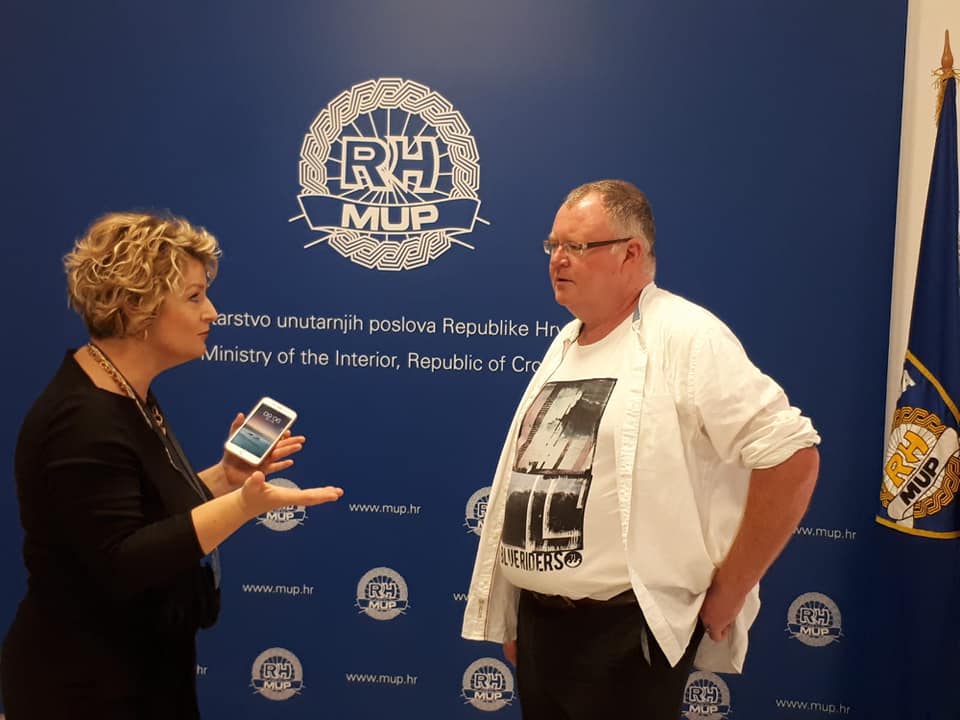
My tour was organised by Marina Mandic, the Ministry PR lady. It was such a seamless service that I actually felt I was no longer in Croatia, but had been transported to another country where efficiency was the order of the day.
I am often very critical of Croatian officials, so here it is, when I see someone doing an outstanding job, I am happy to tell the world. Bravo, Ms. Mandic, and thank you for such a fascinating tour.
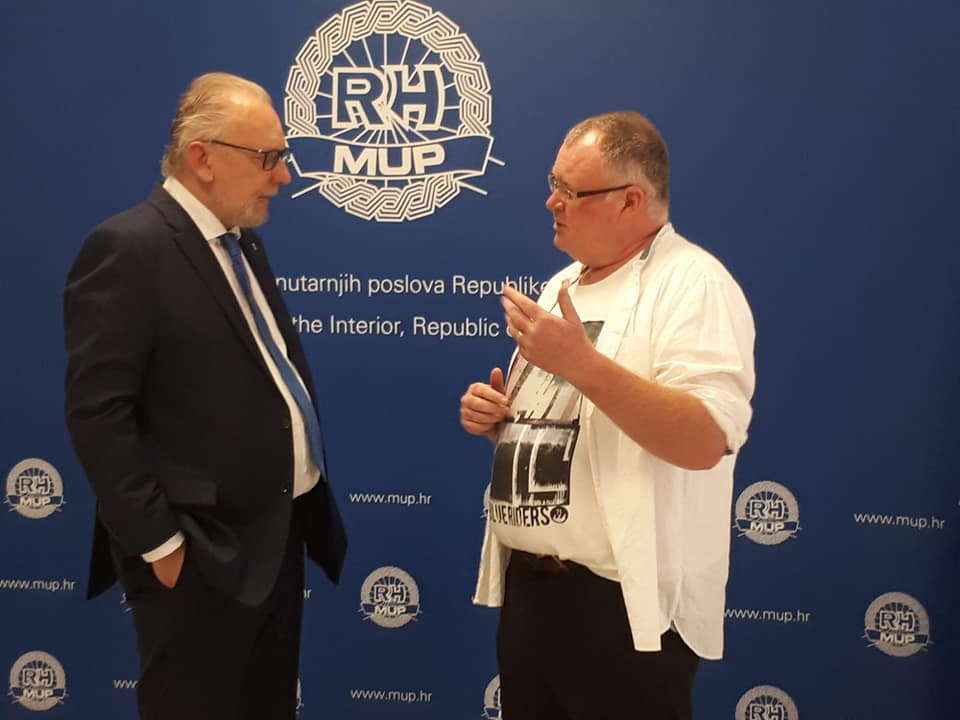
Minister Bozonovic was happy to chat and answered various questions that I had. It was a very organised process from start to finish.
After an overview of border procedures with the Assistant Head of the Border Police Directorate, Gilio Toic Sintic, it was time to enter the room about which I was most curious - to meet the team answering all the emails from tourists trying to get official information about their particular cases - would they be allowed to visit Croatia?
After a slow start, the official information about travel to Croatia started to come together. The best source of information came on the Interior Ministry website, and a dedicated FAQ section covered most of the questions. For those who could not find an answer to their question (or were too lazy to search), there was a form to fill in where you could post your question. This FAQ and form is available in English, German and Croatian.
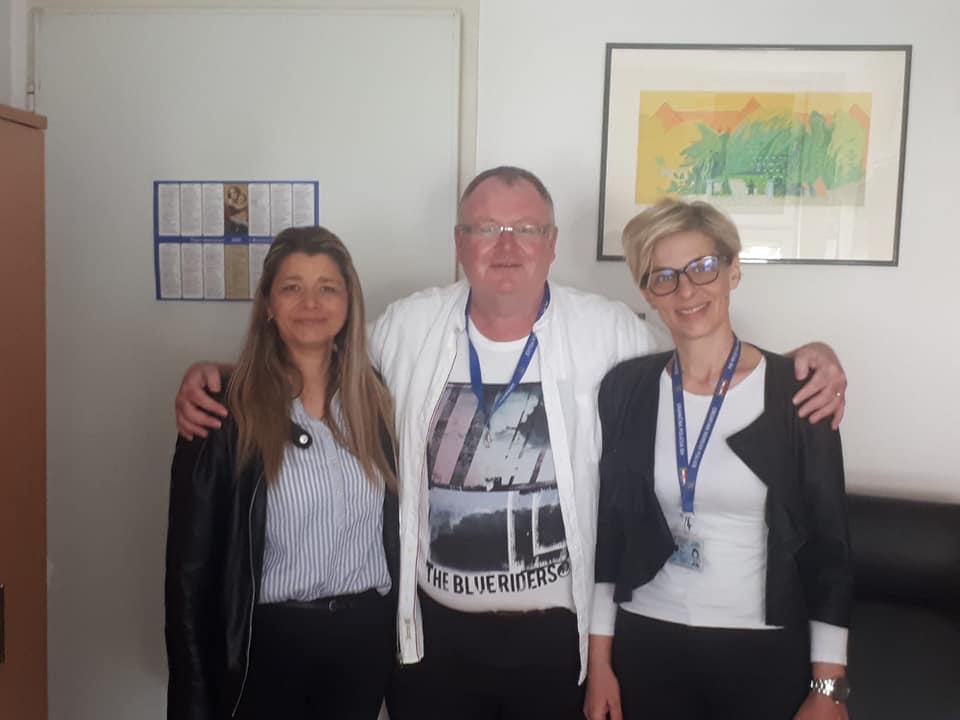
Two days after Kreso Macan and I returned to the border visit of May 17, we launched the Viber community, Total Croatia Travel INFO in an attempt to try and help tourists find the latest information and answer their questions, as there was so much confusion out there.
We also started a daily travel update page, with all the latest information and links to the latest news. Soon after that, we had the daily travel update available in 24 languages.
One of the many interesting bits of feedback we got from our new Viber community (join here, but you need to download the app), was that it was taking 5, 8, 9 days to get an answer from the official email address at the ministry - if there was an answer at all. I was curious to find out why, and so I was curious to meet the team answering the emails.
It was quite an eye-opener.
Meet part of the dedicated team from the Croatian police department (that's right, while Croatia is breathing tourism, it is left to the police to answer those tourist questions such as 'when will flights to Split start?' 28,000 questions so far. Questions in Hungarian and Portuguese. So many emails, indeed, that the Croatian police have had to request help from police departments all over the country.
In a land of a national tourist board, 20 regional and 319 local tourist boards, a Ministry of Tourism, and a tourism section in the Croatian Chamber of Economy, there was nobody free to answer the emails, so the police have had to allocate extra resources to help.
At a time when police resources are already stretched due to corona. Ministry of the Interior 3, the official Croatian tourism chaps 0.
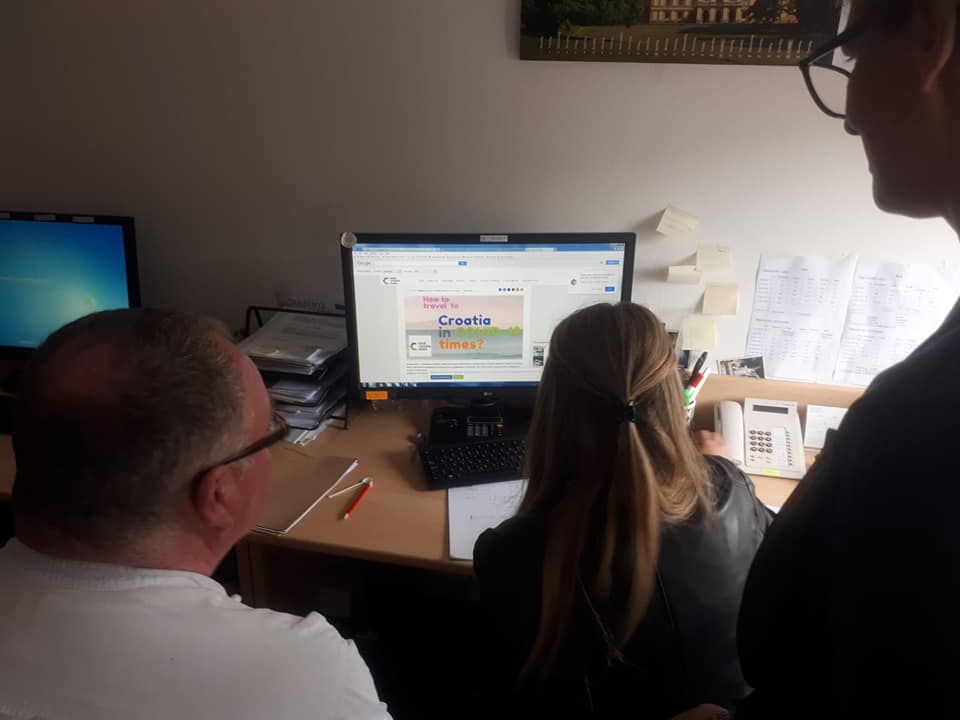
I was expecting to find huge inefficiency due to the unanswered emails, but quite the opposite. Here was a dedicated bunch of people working hard to get through the mountain of emails. In all manner of languages that they could not comprehend.
I offered to show them some tools which could help reduce the job. I showed them our Viber community and our travel update.
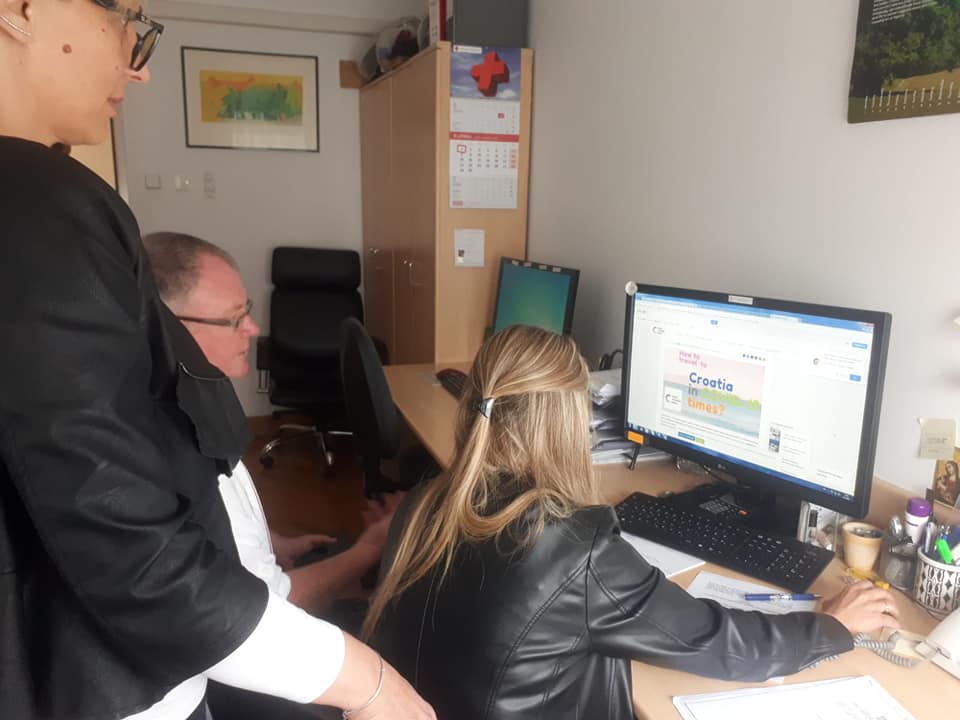
And our travel update in 24 languages. Feel free to send the link, copy a paragraph of info, whatever it is that you need to do to make your job easier.
Two immediate takeaway suggestions I have to share with you.
1. If your enquiry is tourism-related, send your enquiry to This email address is being protected from spambots. You need JavaScript enabled to view it.. This is the Croatian National Tourist Board, and they are one of the most responsive press departments I have encountered in Croatia. They will (or should) have better information on tourism matters than the police.
2. If you want a quicker response from the police to your enquiry, they can comfortably cope with enquiries in English, German and Croatian. If you send your enquiry in Portuguese or Hungarian, it will be greeted with less enthusiasm, and so probably a slower response time. The police are VERY busy, so my advice is to make it as easy as possible for them.
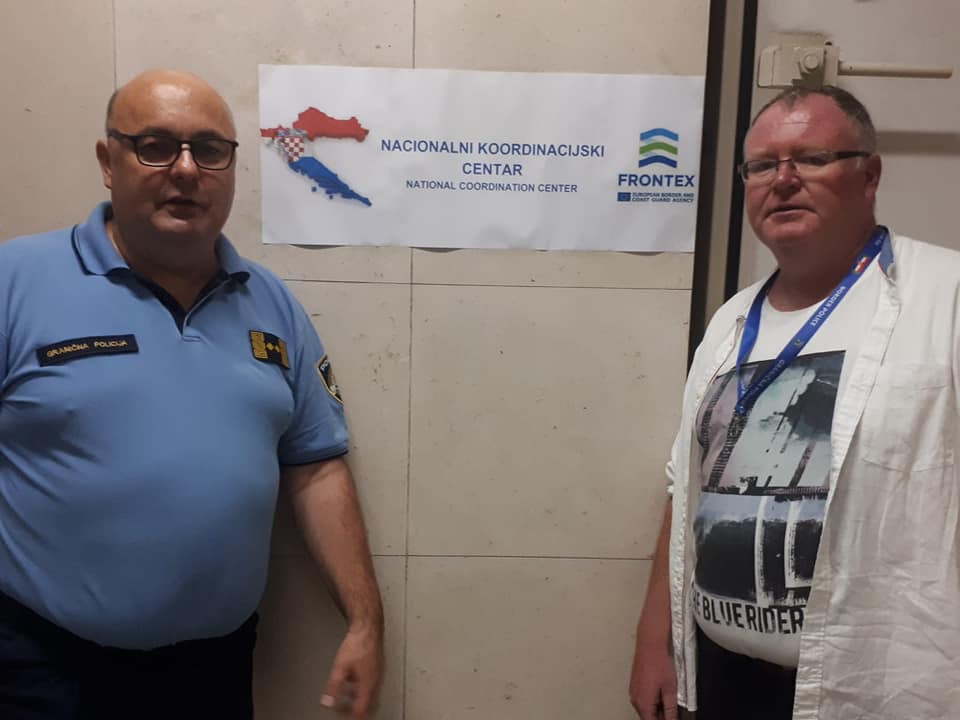
Next up, the National Coordination Centre, the pulse of border control.
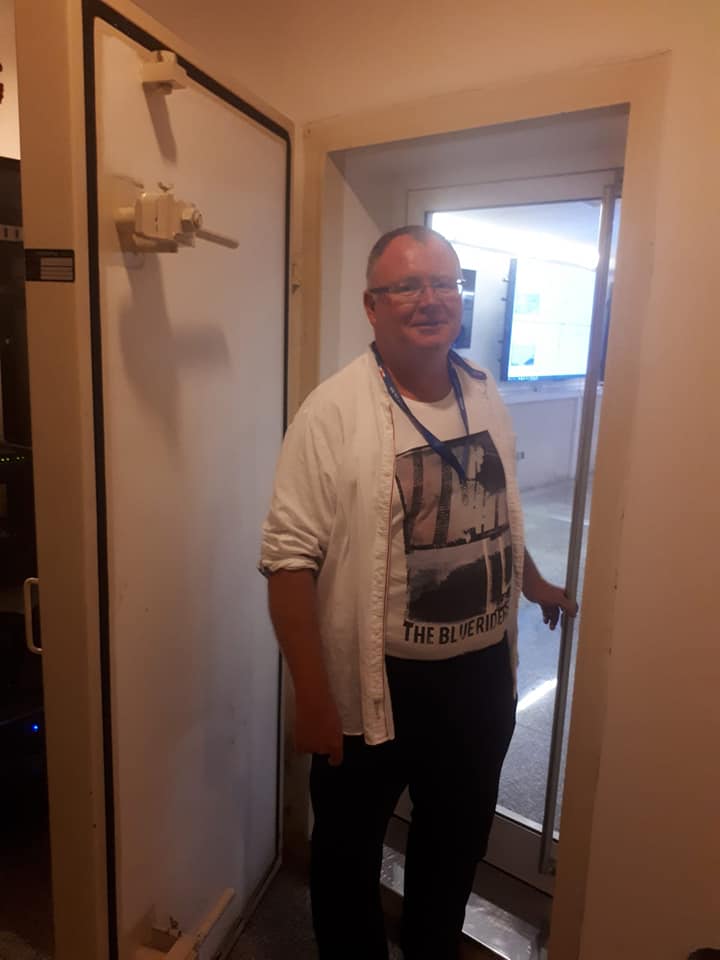
This was a very secure room...
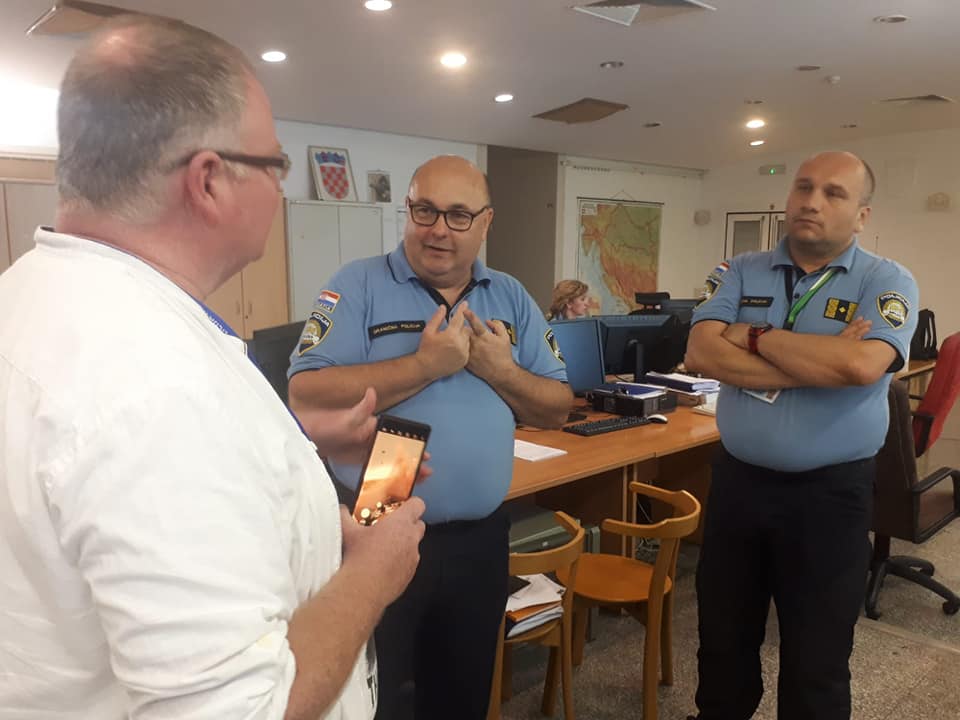
I wasn't sure how welcome an enquiring foreign journalist would be, or how much access I would get, or what photos I would be allowed to take and publish.
The answer was that there were some limits regarding photography - understandably - but everyone I encountered was extremely forthcoming with information and professional in its approach. Did I say that this ministry behind the scenes ran like clockwork?
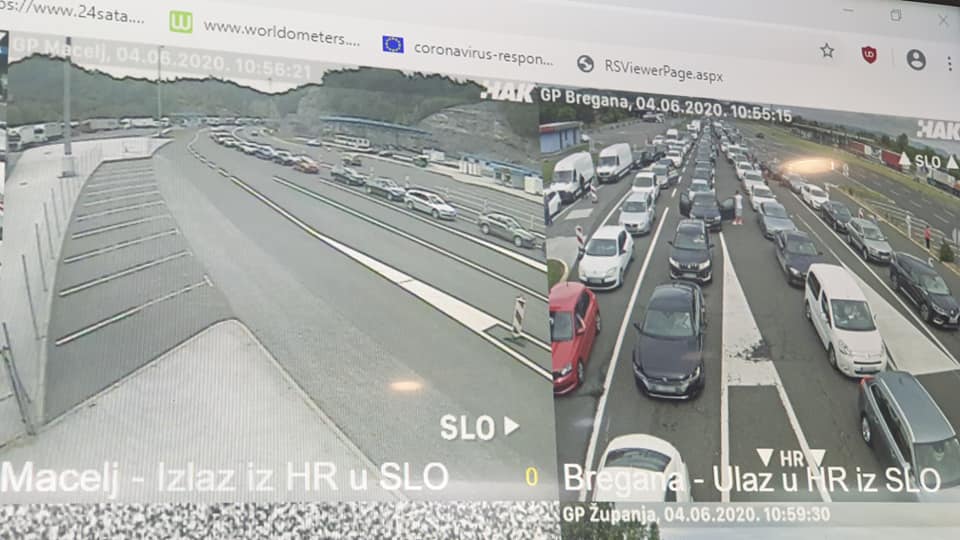
All the borders on one giant screen, so that resources could be reallocated as the need allowed. There was also a customs officer working in the control room, so that all border issues were addressed efficiently and immediately.
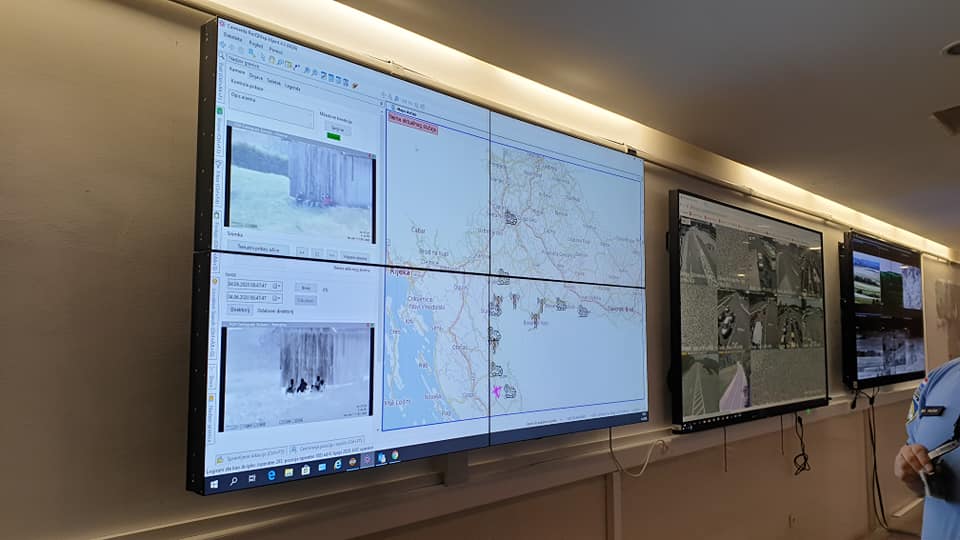
And the police were keeping on top of migrant movements on the eastern borders.
Really impressive stuff, all explained with warmth and humour. My question about when Croatia would join Schengen drew a wry smile or two, and we had a good exchange over the policing of Liberland.
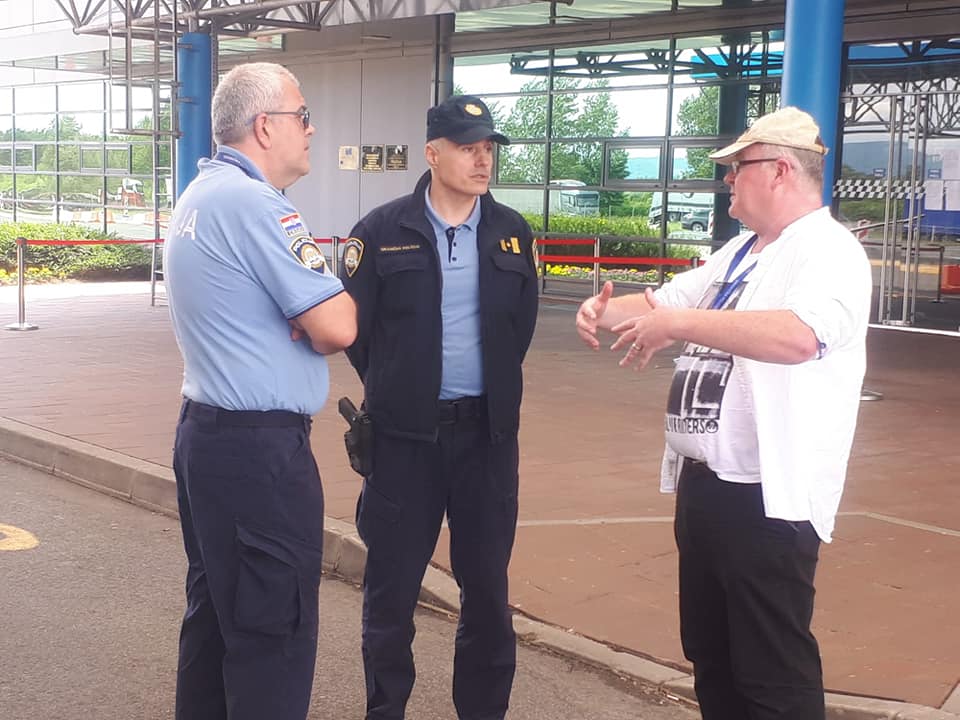
Next it was off in the Macan Porsche to Bregana, the main border crossing between Croatia and Slovenia, where the border police could not have been more helpful. After explaining our mission, they again gave us more access than I was expecting.
It seems that the system with the online form is working well. Between May 28 and June 4, 56,000 people entered Croatia using the form, from a total of 25,799 applications. One thing that surprised me a lot was the number of transit passengers. About half the foreign visitors entering Croatia are in transit to Serbia, Bosnia, Greece and Turkey etc.
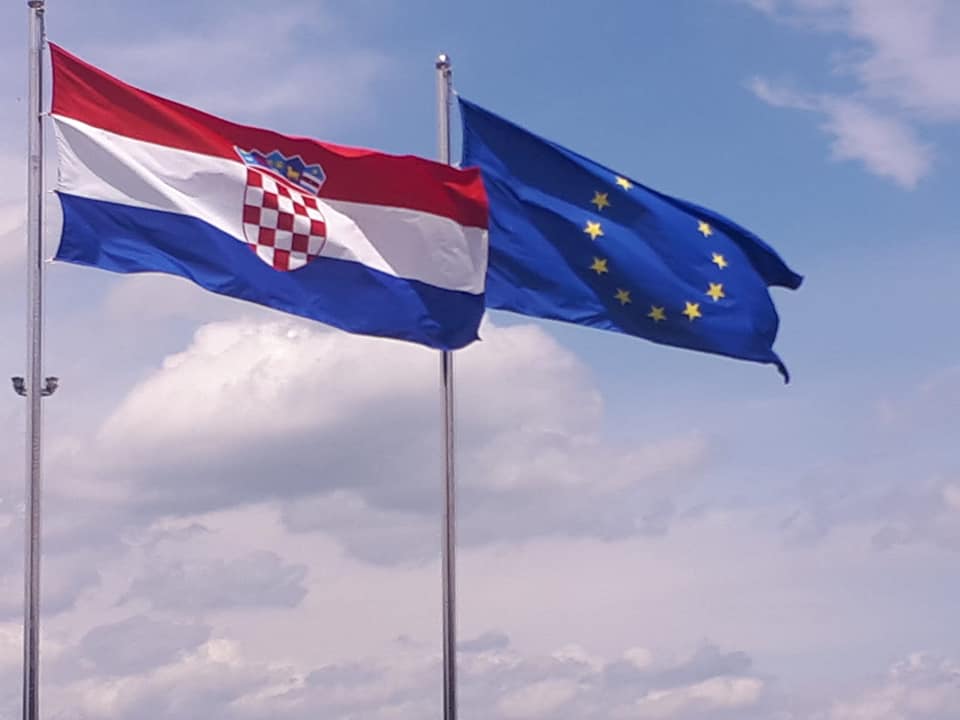
Yes there were some people who were refused entry, an average of 2-3 a day at Bregana (this border currently handles between 5 - 8,000 people a day). This is true in and out of the season, but the message was clear - if you have your documentation in order and have filled in the entercroatia.mup.hr form, you will have no problems entering.
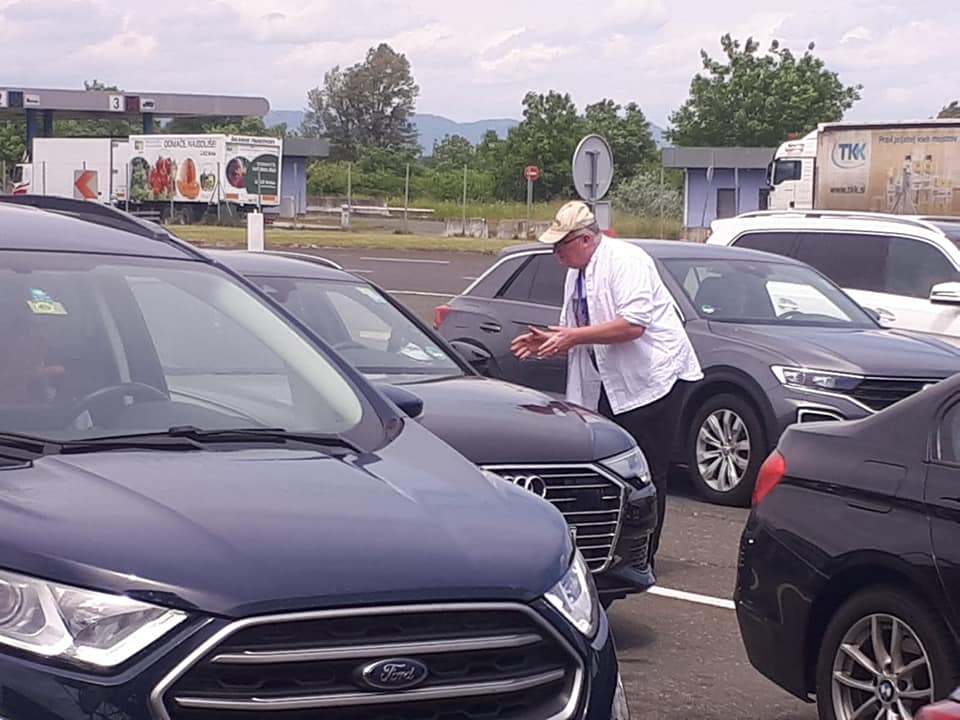
I asked a few of the tourists coming into the country, and I was surprised at the amount who had filled in the form - they all showed me the police confirmation print out, which they had showed at all transit borders on the drive from their homeland. The system seemed to be working superbly.
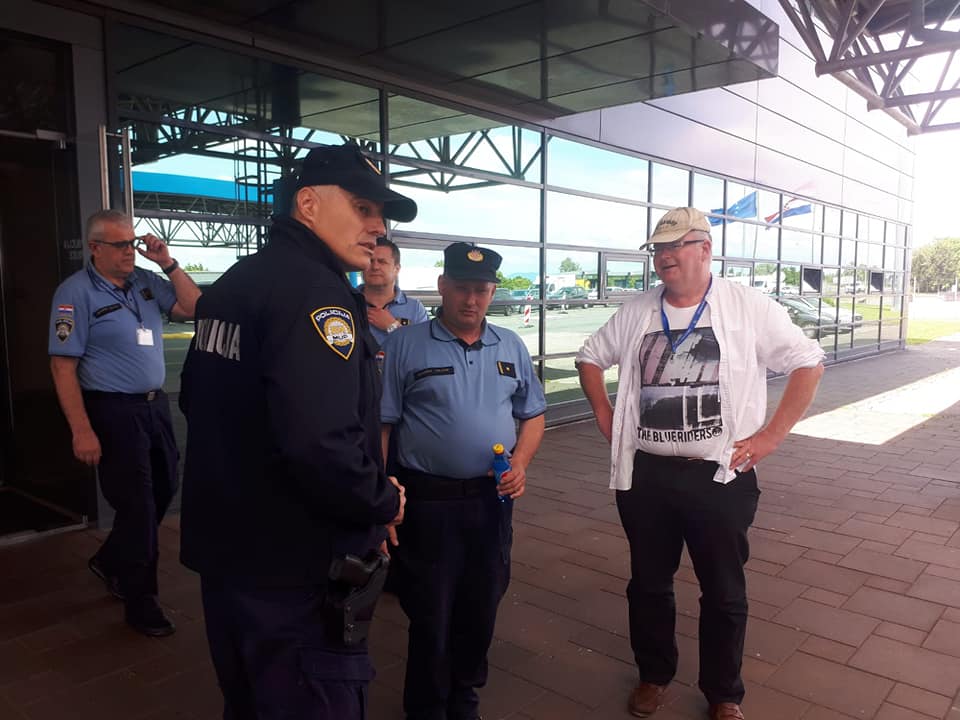
What a day! Certainly one of the most interesting mornings in my 18 years in Croatia.
My thanks to all the team at the Interior Ministry and the border control and border police. A supremely efficient operation.
And you STILL have time to answer all those tourist emails...
For the latest travel info, bookmark our main travel info article, which is updated daily.
Read the Croatian Travel Update in your language - now available in 24 languages
Plenkovic and Kurz Agree on Free Movement Between Croatia and Austria
As tportal writes on the 9th of June, 2020, Prime Minister Andrej Plenkovic has agreed with Austrian Chancellor Sebastian Kurz that Austria would lift restrictions on free movement between Croatia and Austria.
Although Austrians were the most frequent visitors to Croatia last week after Slovenes, Austria hasn't yet officially approved travel to Croatia, nor has the country lifted restrictions on Croatian citizens crossing the border, as they did with their neighbouring countries with the exception of Italy.
Prime Minister Plenkovic announced that this would change soon.
He announced on his Twitter profile that he had talked with Austrian Chancellor Sebastian Kurz about preparations for the next European Council meeting and the situation with the coronavirus epidemic. They agreed that the government in Vienna would make a decision tomorrow on lifting restrictions on the movement of people between Croatia and Austria from mid-June onwards.
''Croatia is open to Austrian tourists, they know it and they're coming,'' Interior Minister Davor Bozinovic said on Friday.
''At the moment, behind the Slovenes, the Austrians are our most frequent visitors. Croatia is open in that sense, the Austrians know that and they're coming,'' said Božinovic after the video conference of the European interior ministers.
"I think that Croatia is so recognised, so attractive and known by our neighbours and EU member states that I don't see what will prevent them from coming to Croatia," Bozinovic said, adding that Zagreb was now engaging in bilateral talks with Vienna.
He reported that a video conference showed that there was political will within the EU at the ministerial level to open internal borders around June the 15th, but that epidemiological situations still had to be monitored because the pandemic isn't at the same stage in all countries.
As for the EU's external borders, the Croatian minister pointed out that a coordinated approach would be applied in this regard 'given that coronavirus infection is very intense in various parts of the world, but that a certain exception can always be made for those countries which have a favourable epidemiological situation, especially in the closer European neighbourhood.
For the latest travel info, bookmark our main travel info article, which is updated daily.
Read the Croatian Travel Update in your language - now available in 24 languages
Join the Total Croatia Travel INFO Viber community.
For more on travel between Croatia and Austria, follow our travel page and our dedicated coronavirus section.
Split Tax Administration: Tourist Traffic Dropped 98% due to COVID-19
June 8, 2020 - What suffered most in Split-Dalmatia County during COVID-19? The head of the County Tax Administration spoke how much was spent, and how much activities lost during the corona period.
On March 19, the coronavirus pandemic put the key in the lock for all activities and craftspeople, except those necessary for the normal functioning of life, such as food stores, gas stations, pharmacies and the like.
However, Slobodna Dalmacija asked Ivica Kusić, the head of the Tax Administration in Split-Dalmatia County, how much we actually spent and which activities lost the most in that period.
"In the first five months of this year, Split-Dalmatia County generated a turnover of around 4.6 billion kuna, while in the same period last year it generated around five billion kuna, which means that a decline of about nine percent was recorded," explains Kusić.
When we analyze these data by activities, the largest loss in the first five months was realized in arts, entertainment and recreation, where compared to the first five months last year, a decline of 66 percent was recorded.
A drop in turnover of over 60 percent was also recorded in administrative and support service activities (64 percent) and professional, scientific and technical activities (62 percent). At the county level, the turnover amounted to HRK 757 million in April. For comparison, 1.1 billion kuna was realized in April last year, so that a drop of about 31 percent was recorded.
When we look at the activities, the biggest decline in April this year compared to last year was in the activities of providing accommodation and food preparation and serving. Last year, the turnover in April amounted to around HRK 159.9 million, and this year to HRK 3.2 million, which is a drop of around 98 percent! A large decrease compared to last year is also in education, where in April 2019, HRK 2.7 million was realized, and in 2020, HRK 116,023, or 96 percent less.
Administrative and ancillary service activities last year generated a turnover of around HRK 31 million, and this year HRK 1.5 million. Arts, entertainment and recreation recorded a decline of about 90 percent, and other service activities about 87 percent. In transport and storage in April this year, compared to last year, turnover fell by about 77 percent, and in construction by about 49 percent.
At the county level in May, the largest loss of turnover compared to the same month last year was recorded in administrative and service activities. Last year, HRK 43.8 million was realized, and this year HRK 4.3 million, which is a drop of about 91 percent.
This is followed by arts, entertainment and recreation activities where the drop in traffic is about 85 percent. Last year, they earned around HRK 5 million in May, and this year a little more than HRK 750,000.
The activities of providing accommodation and food preparation and serving earned HRK 268.8 million in May last year, and HRK 45 million in the same month this year, which is a drop of 83 percent.
Transport and storage activities in May this year compared to the same month last year, recorded a decline of about 78 percent. That is, last year they generated revenues of HRK 41 million in that month, and now HRK 9 million.
"Data for May show us that the level of consumption or turnover is rising slightly after the restrictive measures related to the coronavirus pandemic were lifted. In the cumulative view from January to May, we can link good results to the very good first three months of 2020. With the complete relaxation of measures, the realized turnover in all activities will grow," concludes Kusić.
To read more about lifestyle in Croatia, follow TCN's dedicated page.
Croatia Desirable Nautical Tourism Destination Thanks to Coronavirus Handling
As Morski writes on the 7th of June, 2020, Croatia expected to earn an enormous amount of money this year from the budding and highly promising nautical tourism sector. Due to the ongoing coronavirus pandemic, of course, those earnings will be significantly lower, but not as low as in some other branches of Croatian tourism.
With the opening of the borders, sailors, who keep their boats in Croatian marinas, are continuing to arrive in increasing numbers, the first megayachts are entering Croatian waters, and a charter fleet has been launched, which Croatia has the most of and is among the most famous in the world, writes HRT.
Most foreigners perceive the Republic of Croatia as a destination free from coronavirus, while it would be a lie to say that is true, what can be said with utmost confidence is that Croatia has handled and is continuing to handle the pandemic exceptionally, making it among the safest countries in the world. Leading the way in the feeling of safety are those in nautical tourism and sailors who feel carefree in Croatian marinas and on their boats.
''A large number of guests came to us. We can't, of course, compare this and draw a parallel with last year. However, guests are indeed returning, and those who haven't yet arrived continue to express their desire to come as soon as possible. We even have new arrivals, which makes us happy,'' says Renata Marevic, director of the Punat marina.
This June, as we reported recently, the use of ACI marinas from Istria all the way down to the extreme south of Dalmatia is free of charge for the owners of boats berthed there throughout the year. They want to encourage arrivals and show that nautical tourism and sailing along the Croatian coast and to the islands is a safe venture to undertake. In addition to foreign sailors on their own vessels, a charter fleet has been launched, and megayachts are in sight.
''We had inquiries for mega-yachts coming from the markets of France, Spain and Italy, and even from the Caribbean. We have no specific inquiries for the transfer of the charter fleet from the Balearic Islands, but we have for megayachts. The marina in Rovinj is one of those in which we've been having talks and I believe that we'll manage to accommodate some of these ships because it was made for this type of client,'' says Kristijan Pavic of ACI.
For more on nautical tourism in Croatia, follow our travel section.
Will Coronavirus Crisis Finally See Croatian Tourism Industry Lower Prices?
As Novac writes on the 4th of June, 2020, although we're now in early June, and despite permission from the National Civil Protection Headquarters having been given to finally try to restart the Croatian economy, many working in the Croatian tourism industry have decided that some doors will remain closed, and it seems that a few of those who opened their doors to visitors still don't have price reductions.
''The ideas or perhaps it's better to say the recommendations at the level of our destination are that there is no need to lower prices compared to what they were at the same period last year, but to provide additional services in those existing prices, such as parking or similar things. There will be an action, like six days plus one free, or three people, then the fourth person free, and the action from the tourist board will be a free ferry in September, but there is no collective price reduction,'' said the director of Losinj Tourist Board, Dalibor Cvitkovic, for Novi list, adding how Losinj is sticking to its prices because of the quality of service it offers guests.
''We're waiting for June the 15th, it's our D-day, because the German Government has recommended to its citizens not to go anywhere until then, and the Germans are our emitting market. We expect a lot of tourism in September, precisely because of the hope that the pandemic will be quite far behind us then. However, the potential for these 30 to 40 percent of bookings should be taken with a grain of salt, because a potential guest can cancel it at the last minute,'' he said.
Thus, the price of an apartment for four people on Losinj in the peak season ranges from 80 to 100 euros, and for a hotel room, depending on the view and the hotel, is anywhere between 150 and 200 euros, which is approximately the same as it was last year, which was a record year for Croatian tourism.
On the other hand, in the Dalmatian city of Split, the prices of overnight stays range from 600 to 4000 kuna, but overnight stays there are around one thousand kuna during July, and the situation is similar in Crikvenica where the price of accommodation ranges up to around 2000 kuna.
The president of the Family Tourism Association at the Croatian Chamber of Commerce, Martina Nimac Kalcina, says that there are price reductions, but it depends in which parts of Croatia you're in and that this year a domestic guest could spend fifty percent this year when compared to what they did last year, Novi list reports.
''In Istria, the prices generally didn't decrease, while in some parts of Croatia prices were lower by about 20 percent. The owners of luxury villas are among the most reluctant to lower ther prices, except in the case of discounts as part of certain promotions. If Croatian guests come directly to the owner of the facility, then they can certainly lower the price, given that there will be unfilled facilities this year,'' explained Nimac Kalcina, adding that this year, domestic guests could easily find available accommodation for fifty percent the price they'd usually be.
For more, follow our business page.
Coronavirus, Earthquakes and Beethoven - Zagreb I Love You So
June the 5th, 2020 - As we wrote on June the 1st, 2020, the initiative Zagreb, I love you so (Zagreb, take imam te rad) enacted and organised by the Unimedia Agency from Zagreb, opened with a panel discussion aimed to raise awareness about the necessity of a thorough restoration of the many historic venues damaged by the catastrophic earthquake in the midst of the coronavirus pandemic back in March.
If you missed it, you can find more details here.
As announced by the organiser, the second part of the action, and quite a special one indeed, is going to take place in the atrium of the Croatian Academy of Arts and Sciences (HAZU) on Sunday the 7th of June, 2020, at 20:00. It will be worth every little bit of attention and is going to be streamed on the platform of Vecernji.hr and on this YouTube channel. Make sure not to miss it, here's why:
Ludwig van Beethoven was born exactly 250 years ago. The world was preparing to celebrate one the of the most brilliant authors of all times, but then… the coronavirus pandemic sneaked in. And an earthquake shook Zagreb in the midst of it. Worldwide, events and concerts in the honour of the great master had to be cancelled.
The Zagreb Soloists wanted to give their share in the anniversary and adapted to the situation in a unique way. Sreten Krstic, their concert master, composer and teacher of music, was essentially inspired by the limits imposed by the pandemic and, for the first time known to us, re-orchestrated one of Beethoven’s most admired oeuvres and adapted it to the formation of a chamber orchestra. That is the version we're going to hear on Saturday evening.
The first four notes, the famous ‘ta-ta-ta-taaa’ opening Beethoven’s Symphony no.5 have entered the ear of most every human on Earth. When we listen to this glorious mainstay of classical music, we enjoy the harmonies, the rhythm, the dynamics and those often surprising specific musical colours of his characteristic orchestration, imagining what we feel or what we want as music has no boundaries.
As lovers of classical music, we seldom think of what inspired the author, of what is his real message and a real content of the particular piece. Here are some hints to help us be more aware of what Beethoven had in mind, and, especially and separately, why his Fifth Symphony is so adequate for this particular evening, as it is special and important in more ways than one.
Another thing everybody knows is that Beethoven started losing his hearing in his early years and that he ended his life totally deaf (although some evidence suggests that he could hear low tones and sudden loud sounds to his last day). What a setback for a musician!
In 1802, on the advice of his doctor, he moved to the small Austrian town of Heiligenstadt. In his letters to his brothers, he often mentioned his growing deafness and suicidal thoughts, but also his resolution to continue living for and through his art, how he had to ''seize fate by the throat, it shall certainly not crush me completely''.
This can be taken as the message of this Symphony to all : do not kneel, fight fate. And to coronavirus and the earthquakes we say: You can't crush us completely!
Make sure you dedicate less than one hour of your time on Sunday evening to this message that eventually will also be spread to the world through a delayed broadcast of Croatian National TV (HRT) and the US based cable TV and communications platform Comcast. Zagreb is greeting the world through the Zagreb Soloists, its honoured and honourable ambassadors!
Plug in, enjoy and be proud. For we will never be crushed!
For more on coronavirus, follow our dedicated section.


